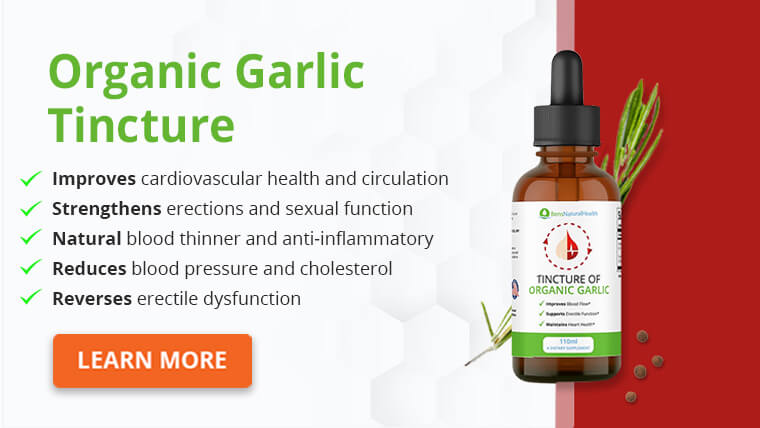One of the best aspects of the blood vessels is their capacity to regulate themselves.
They do that by synthesizing their own hormones, one of which is nitric oxide.
This substance has been a focus of investigation in many aspects, including blood pressure and erectile dysfunction. It has also become very popular as a blood flow promoter to the brain and other structures.
But how do we naturally achieve increased nitric oxide levels? In this article, we’re considering a few foods you can include in your diet to give your body the building blocks to create nitric oxide.
What is nitric oxide?
Also known as NO, nitric oxide is an essential molecule in the body. It is produced in the blood vessels, endothelium, and many other cells. The circulatory system dilates blood vessels and promotes increased blood flow.
By doing so, nitric oxide helps increase blood flow to the brain, improving exercise performance, and lowering blood pressure levels (1).
Benefits of nitric oxide for the prostate
Are there any health benefits of nitric oxide for the prostate tissue? The far-reaching influence of this molecule is also relevant for the prostate gland.
The gland has nitric oxide synthase, the enzyme that produces nitric oxide. Optimal nitric oxide levels are known to reduce lower urinary tract symptoms caused by benign prostatic hyperplasia (BPH). Thus, the molecule has a potential role in BPH (2).
In many tissues, low levels of nitric oxide may promote cancer. Adequate levels are protective against different types of cancer. Besides testosterone, prostate cancer may also be driven by low levels of nitric oxide, as considered by many authors (3).
Thus, if you want to reduce high blood pressure or treat your prostate enlargement symptoms, increasing nitric oxide levels is probably part of the solution.
Get Your FREE PSA Lowering Diet Plan!
- Naturally lower PSA levels
- Reduce nighttime trips to the bathroom
- Enjoy better bladder control and urine flow
10 best foods to boost nitric oxide
Clinical nutrition is a specialty that studies what foods are appropriate according to specific health problems, especially those difficult to solve.
According to research on this field, this is what you might want to eat to boost your nitric oxide levels:
1. Beets
You may find it as a tubercle or as beetroot juice. Either way, it is filled with dietary nitrate, the building block to create nitric oxide.
According to a clinical trial, beet juice intake may increase nitric oxide by 21% in only 45 minutes (4).
2. Garlic
Allicin in garlic and many other phytonutrients improve cardiovascular health and prevent heart disease.
One mechanism is by increasing nitric oxide production. It activates the enzyme nitric oxide synthase, which converts L arginine into nitric oxide. Combining garlic with arginine supplements would further boost nitric oxide activity (5).

3. Meat
Chicken and fatty fish are probably the best type of meat you can include in your diet. They provide proteins and a substance called coenzyme Q10, which is also essential to keep your nitric oxide levels. This coenzyme promotes heart health and improves athletic performance (6).
4. Dark chocolate
It comes from cocoa, which has many flavonols that protect your body against oxidative stress. In other words, they are potent antioxidants that preserve endothelial function.
Besides reducing cardiovascular risk, only 30 grams of dark chocolate every day increases nitric oxide levels. Just make sure that you’re eating 100% pure dark chocolate without any added sugar (7).
5. Leafy greens
Leafy greens include kale, cabbage, arugula, and spinach. They have plenty of inorganic nitrates, a substance that is quickly converted into nitric oxide.
They are considered nitrate-rich foods, which is why it reduces blood pressure levels and cardiovascular disease (8).
6. Citrus fruits
These fruits are the classical source of vitamin C, which increases nitric oxide bioavailability. In other words, the body absorbs nitric oxide faster in the presence of vitamin C (9).
7. Pomegranate
Another potent source of antioxidants comes in pomegranate juice. It protects the blood vessels from oxidative stress and prevents endothelial dysfunction.
Studies in humans show an increase in blood flow after consuming pomegranate, likely due to a significant nitric oxide increase (10).
8. Nuts and seeds
They are a source of arginine, an essential amino acid for nitric oxide production. It is a suitable alternative if you prefer a dietary source of this nutrient.
Moreover, nuts and seeds are appropriate for patients with diabetes and chronic disease. Pistachios seem to have the most potent blood pressure-reducing effect (11).
9. Watermelon
Watermelon is one of the best food sources of the amino acid citrulline, which converts into arginine and finally turns into nitric oxide. Moreover, drinking 300 mL of watermelon juice every day may increase nitric oxide bioavailability (12).
10. Red wine
Moderate wine consumption reduces blood pressure and cardiovascular risk. One of the reasons is that red wine increases the enzyme nitric oxide synthase activity.
Along with a source of nitric acid, and as long as you do not exceed 1-2 glasses, it can be an excellent tool to increase nitric oxide (13).
Conclusion
Nitric oxide is a vital substance synthesized by many cells of the body, including our blood vessels and the prostate.
Healthy levels of this molecule may reduce the risk of benign prostatic hyperplasia and prostate cancer. It is also helpful to lower blood pressure and cardiovascular risk.
After reviewing a list of nitric oxide foods, we can see that most of these foods contain amino acids that turn into nitric oxide (citrulline and arginine), nutrients that activate the enzyme NO synthase, or antioxidants that protect the endothelium against oxidative damage. Alternatively, we can use nitric oxide supplements, making sure that they provide all of these important elements.
Explore More







